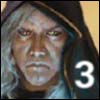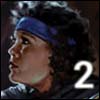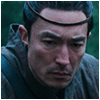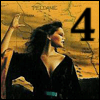I was in new territory when I first read this book, because I had to wait for it. It had only been released in hardbook once I finished the previous entry, Demon Lord of Karanda, and as an 8th grader with a paltry allowance, I could not afford it. So I had to wait for the paperback, which didn't come out until November 1990.
The agony! This was my first experience with having to wait for the next entry in an ongoing series. Looking back, it wasn't all that bad since I only had to wait a couple of years for these last two books. That's nothing compared to the 20 years I experienced as an early The Wheel of Time reader. But of course you can read all about that in those blogs.
Anyway, all starts to become clear as our party now continues their trek, this time through the Melcene Empire. This is my favorite entry in The Malloreon, with the last book, The Seeress of Kell, coming in a close second.
Before You Continue
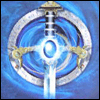
- This blog is part of my The Belgariad / The Malloreon Retrospective
- See this blog post for an overview of the Retrospective
- These blogs are not plot recaps—they are most effective in conjunction with your own re-read of the series
- Warning: CONTAINS SPOILERS FOR THE ENTIRE SERIES
What Everyone Else is Doing
We open this book with a chapter that doesn't focus on Garion and our heroes, but rather all the people that they left behind in the West. It's kind of a dull opening, nothing more than a series of cameos to sate those readers who might miss those characters. There was one in the previous book, I believe. Later on, there's another, and I honestly want to skip over them half the time, because Garion's quest is much more interesting.
However, it is somewhat necessary, as it explains how Barak and the other warriors we had to leave behind meet up with our heroes near the end of the final book. Which is rather amusing... we know they won't be able to catch up to Garion, because the prophecy won't let them. So it's fun to see misfortune befall them (mainly because they can be pretty stupid at times, i.e. Lelldorin and Mandorallen).
The Cover

What else can I say about these covers that I haven't already said before? Same style as usual, nothing too exciting.
This time we have Zandramas, Garion and Poledra in her wolf form. They are at a farm, and this is during the attack of Zandramas on them in the night (she first attacked in her dragon form). The background, of course, shows the Melcene Empire, which is featured in this volume.
Garion seems a bit short in this picture, if you ask me... Zandramas just towers over him. But it's good that Zandramas is on the cover. You can't title the book after a character and not put them on the cover! Oh wait... they did that for King of the Murgos. And they do it for the next book, The Seeress of Kell... so never mind, I guess they can.
The Complete Zandramas

As I mentioned in my post for Demon Lord of Karanda, each book in this series progressively reveals an aspect of our antagonist, Zandramas. Here we finally learn her background - where she came from, how she became the Child of Dark, etc - conveniently told to us by a Melcene bureaucrat Garion and Co. find in an abandoned village in Peldane.
After Torak was killed, the Dark Prophecy fled into a new Child of Dark: Zandramas. She was consumed by it and fled into the forest for years. Eventually she returns to begin preaching that a new god of Angarak is coming. Of course Urvon, the last living disciple of Torak, didn't like this. So they've been at each others' throats ever since - and it's all coming to a head in this book as their armies converge in Darshiva.
Of course, when they hear that Zandramas intends to be the bride of the new god, should the Dark win... Ce'Nedra's more upset with the fact that Zandramas would be her daughter-in-law more than anything else. Women!
Silk's Empire
This book also gives us more insight into Silk and Yarblek's vast merchant empire that they started building after The Belgariad. Throughout this series we have been learning of their exploits, and they have offices everywhere it seems. Here they put it to good use in Melcene when tracking Zandramas and the Sardion.
I always felt this was another sign of the world changing and finally moving on from the repetition and stagnation of the dual prophecies. Before The Belgariad, Silk and Yarblek would have never been able to do something like this, not with Torak still alive, the Grolim Church strong and the enmity between Alorn and Angarak. But much like the fall of any type of oppressive society, with the death of Torak trade opens up and the West infiltrates the East, so Silk's successes are not exactly surprising.
To Silk, however, it's all a game. He's on his way to literally becoming the richest man in the world, but actually having the money doesn't seem to mean that much to him. Just the fact that he bests all his opponents. Money is simply the way they keep score.
Men!
Melcena
So our party finally leaves the Seven Kingdoms of Karanda, heading for the Melcene Empire. The island of Melcena reminds me of Tolnedra, only better. Tolnedra prides itself on their educational system and modernization, yet they won't acknowledge the existence of sorcery. The University of Melcene here is a greater center of learning than that found in Tolnedra, plus they accept sorcery and magic. It's essentially the greatest center of learning in Eddings's world.
Here our heroes follow the trail of the Sardion and Zandramas (they lead to the same place), and it's here that they learn much of the history of the Sardion from the clubfoot Senji, who is really an untrained sorcerer that's lived for a few thousand years himself. The couple of chapters where Belgarath, Beldin and Garion visit Senji are probably my favorite of the entire saga. There's a lot of history and discovery, and some memorable dialogue as well.
The Sardion resided at the University for thousands of years, but eventually it was stolen... and since it left, so must we. At this point Belgarath learns that they must go to Kell to discover the location of the Place That is No More. So off we go!

Peldane
Simply another region of Melcene that our party must cross, there's not really much to say about Peldane. It's torn by war and we slowly make our way across it, hot on Zandramas's trail; they've pulled within a day or so now. No special history, no unique people - pretty much the same as anywhere in Melcene. A stark contrast to the variety of cultures found from region to region in The Belgariad.
A few important things do happen here. One is that they learn Zandramas's backstory from a Grolim they capture and drug. The other is another encounter with Zandramas in her dragon form, along with another appearance of Poledra, both on a farm that reminds our main characters of Faldor's Farm, way back in the very first book, Pawn of Prophecy (from the cover). Poledra still has more to do; we'll be seeing more in the next volume.

Darshiva
This is the home of everyone's favorite Child of Dark, Zandramas. Our party is cutting across these regions because they are heading for Kell... but now they're in danger of being sandwiched between two armies: those of Zandramas and Urvon, fighting for dominion of the Angarak Church (which is ultimately pointless, considering where the story is headed). Zakath's army is converging along the River Magan as well... so you can guess what will happen...
...Zakath rejoins our party. Zakath's army captures them when they try to cross the Magan to get into Darshiva. Cyradis, the Seeress of Kell, orders Zakath to join them or risk dying within the year. Zakath has a secret crush on Cyradis, so it doesn't take much convincing to get him to go in the end.
We also get new party members in the form of a she-wolf and her cub... the identities of which are revealed in the next book, and which will complete our party just in time for the Meeting.
And finally, Durnik completes a very important task at the book's climax.

A New Disciple

Durnik not only is meant to be a sorcerer, but a new disciple of Aldur, perhaps to replace Zedar the Apostate. He earns his amulet by defeating the Demon Lord Nahaz at the end of the book, banishing him and Urvon to Hell with a giant hammer, weighted by the power of Aldur. It's a touching scene since we all know that Aldur has not chosen another disciple in a long, long time. Beldin and Belgarath finally get a new brother.
Of course, the first time I read it I still expected Durnik to be renamed to Beldurnik, but it doesn't happen. Which is good... it just doesn't seem right. Plus, being a Sendarian (one of the peoples who don't have a patron god), he's never been very pious beyond respecting all seven Gods for major holidays like Erastide. So it seems weird... but it makes more sense after the next book.
Of Sorcerers and Amulets
As part of his induction into disciplehood, Durnik receives an amulet with an engraving of a hammer, to go along with those of the other sorcerers (Belgarath = Wolf, Polgara = Owl, etc). And keeping with the theme of repetition from The Belgariad, this is essentially another one, when you really think about it.
In that series, Garion becomes Belgarion and gets an amulet of his own, which features... um, so until I was writing this I didn't even know what was on his amulet. If you remember, Garion received his between Pawn of Prophecy and Queen of Sorcery, right at the beginning of our saga. He starts Queen of Sorcery with it, and just mentions that he doesn't like wearing it, and he takes it off a few times when he shouldn't have. But never do we learn what is on it.
I did some searching online and in the books and confirmed that what's on it is never revealed. It's simply described as "curiously carved" with a "strange design." It's not important in the grand scheme of things, but I wonder why Eddings never revealed what the design was, when the designs of others' were clear. Maybe he just forgot. We'll never know.
Speaking of sorcerers... are you wondering what happened to Beltira and Belkira, the twin disciples from The Belgariad who finish each other's sentences? So am I. They never appear in this series. Eddings ignores them entirely. I wonder what was on their amulets... or Beldin's, for that matter. A falcon, perhaps?
Consistent Cultures
At this point, after travelling through Ancient Mallorea, Karanda and Melcene, you may have noticed that the cultures here on the Mallorean continent are actually somewhat consistent and actually make sense with each other (*gasp*) compared to the hodge-podge of anachronistic cultures found on the unnamed western continent of The Belgariad, and which I mentioned way back in my post for Queen of Sorcery.
Eddings obviously created the Mallorean continent's history separately at a much later date than The Belgariad. This should be clear given how much of that continent is godless and doesn't fit into the theology that dominates the story at the beginning. Well... I'm not sure about Mallorea, but apparently everything was done deliberately. Not too long ago, on an old FAQ, I found this quote from Eddings, featured in Contemporary Authors: New Revision Series, Volume 35 (essentially a reference book with biographical info on authors of the day):
My current excursion into fantasy has given me an opportunity to test my technical theories [of writing]. I made a world that never was, with an unlikely theology splattered against an improbable geology. My magic is at best a kind of pragmatic cop-out. Many of my explanations of how magic is supposed to work are absurdities - but my characters all accept these explanations as if there was no possibility of quibbling about them, and if the characters believe, then the readers seem also to believe.
Of course his magic system has always been weak, but it has never bothered me, since it worked in the confines of the world, and as he mentions, the characters believe in it. And if you remember, I also went into great length about distances and the size of the world itself, in my post for King of the Murgos. They make no sense, and coupled with his comment on theology and geology, you can see why: he didn't intend for it to make sense, if his quote is to be believed. He simply incorporated whatever he wanted to in the series to "test" his "technical theories" - whatever that means.
If an author today came up with a world like this, it would be widely panned as unrealistic, considering how much more plausible and believable fantasy worlds are now. Does that lessen Eddings's work? Not to me... I still find it enjoyable, and it's important because it was the standard of popular fantasy at the time. To understand where fantasy is heading, it's important to know where it's been.
The Belgariad / The Mallorean
Next
2013-05-21 The Malloreon [5] The Seeress of Kell (1991)
Previous
2013-02-28 The Malloreon [3] Demon Lord of Karanda (1988)
2013-01-31 The Malloreon [2] King of the Murgos (1988)
2012-12-12 The Malloreon [1] Guardians of the West (1987)
2012-10-26 The Belgariad [5] Enchanter's End Game (1984)
2012-10-12 The Belgariad [4] Castle of Wizardry (1984)
2012-09-11 The Belgariad [3] Magician's Gambit (1983)
2012-08-18 The Belgariad [2] Queen of Sorcery (1982)
2012-07-09 The Belgariad [1] Pawn of Prophecy (1982)
2012-06-20 The Belgariad / The Malloreon - The Retrospective
